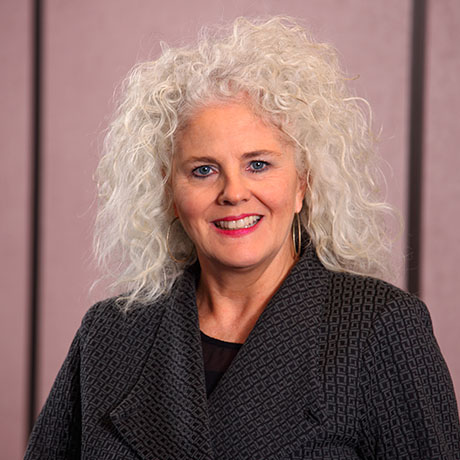Tips for Managing Your Team When Acquiring a Dental Practice
When you purchase a dental practice, you aren’t just responsible for the building and equipment, but you also have a big role to play in making sure that new and existing team members come together smoothly. This can be a delicate process and quite difficult to navigate on your own, but there are a few tips you can follow to make everyone’s lives a lot easier.
Value Your Acquired Team Members
It should never be a case of “out with the old, in with the new” when it comes to putting together a dental team for your newly bought practice. The acquired team members have a lot of value and are an integral part of the relationship the practice has with the patient base. They may also be a big reason that many patients decide to stick with the practice. It’s essential to let existing team members know that they are important and take the time to communicate any changes on how the office will be run. Try to be patient if the transition seems slow because this will make things much more seamless compared to trying to implement whole new systems right off the bat.
Prepare for Bumps
Some of the team members at your newly purchased practice may have been there for decades or done things very differently under the previous owner. Any big changes you make will almost inevitably lead to some dissatisfaction and conflict, so it’s important to be mentally prepared that not everyone is going to like your decisions, even if you know they are in the best interest of the practice. Make it apparent that the lines of communication are always open so that team members can express grievances through the right channels. It’s also important to let your incoming staff know that they may need to help the acquired team acclimate to any shifts in day-to-day operations (they should be instructed on productive ways to do this).
How a Dental Consultant Can Help
Before you find yourself dealing with a mixed dental team, it’s important to work with an experienced consultant when buying a practice so that the transition can be as quick and harmonious as possible. They can help you choose a practice that aligns with your business and personal goals, show you how to train and retrain team members, and help you find the right people so the practice starts on the right foot.
Michael Dinsio has literally helped hundreds of dentists start, buy, and grow countless practices over the years, and Paula Quinn is a practicing hygienist and international speaker with over 30 years of experience as both a dental team member and business owner. Between the two of them, they have comprehensive knowledge of the dental industry inside and out.
Whether you’re thinking about buying a practice or are already in the process of doing so, they can help you get to the finish line with your budget, goals, and sanity all in great shape. If you’re ready to make your life easier, contact Next Level Consultants today.
Read MoreChoosing Between Buying an Existing Practice or Doing a New Build
 By Corey Young, Practice Transition Advisor
By Corey Young, Practice Transition Advisor
Choosing between buying an existing practice and doing a start-up practice can be one of the biggest decisions of your life. Here are four considerations and two suggestions for when you are contemplating.
The four considerations:
Market Saturation – How many veterinarians are practicing in the area you are considering? Hardly any? One on every corner? Somewhere in between? Establishing traction in a high competition area will require a much higher marketing budget. Do you know your marketing budget? Do you have a marketing plan?
Available Practices for Sale – How many practices are for sale in the area you are considering? Do those practices have a broker representing them? Broker representation usually equates to well-substantiated pricing and a defined plan for acquisition. For-sale-by-owner practices can be more of a wild card.
Population Demographics – If you are considering an area for a new build, will the demographics of the area you are considering support your business plan?
Personal Financial Situation – Do you have the financial reserves to weather a start-up? While there are pros and cons to both routes, buying an established practice certainly generates more initial cash flow.
The two suggestions:
Get Help – This will be one of the biggest decisions of your life, whichever route you take. There are some truly skilled and experienced professionals out there that will help guide you through this process in an efficient manner and allow you to minimize risk while seizing the opportunity.
If You Can Produce, Get Moving – Are you a high producer? Can you manage and lead? Can you practice great veterinary medicine without someone looking over your shoulder? If you answered yes to these questions, what are you waiting for?
Read MoreChoosing between Buying an Existing Practice Or Doing a New Build
Choosing between buying an existing practice and doing a start-up practice can be one of the biggest decisions of your life. Here are four considerations and two suggestions for when you are contemplating.
The four considerations:
Market Saturation – How many dentists are practicing in the area you are considering? Hardly any? One on every corner? Somewhere in between? Establishing traction in a high competition area will require a much higher marketing budget. Do you know your marketing budget? Do you have a marketing plan?
Available Practices for Sale – How many practices are for sale in the area you are considering? Do those practices have a broker representing them? Broker representation usually equates to well-substantiated pricing and a defined plan for acquisition. For-sale-by-owner practices can be more of a wild card.
Population Demographics – If you are considering an area for a new build, will the demographics of the area you are considering support your business plan?
Personal Financial Situation – Do you have the financial reserves to weather a start-up? While there are pros and cons to both routes, buying an established practice certainly generates more initial cash flow.
The two suggestions:
Get Help – This will be one of the biggest decisions of your life, whichever route you take. There are some truly skilled and experienced professionals out there that will help guide you through this process in an efficient manner and allow you to minimize risk while seizing the opportunity.
If You Can Produce, Get Moving – Are you a high producer? Can you manage and lead? Can you do great dentistry without someone looking over your shoulder? If you answered yes to these questions, what are you waiting for?
Read MoreAttend Technology In Your Practice: What is the Best Return on Your Investment?
Topics include:
- Digital Waterfall – CAD/CAM, Cone-beam, Digital X-rays
- Chartless Conversion
- Online Digital/Web Presence, Cloud-based Software
Free! Anyone who signs up can access the webinar on-demand if you are not available to attend live.
Want to Purchase a Practice?

By Megan Urban, Practice Transition Advisor
Want to purchase a dental practice? Here is a basic starting To-Do List to get you going!
– Where do you want to practice and where will you and your family be happy?
– Get your last 3 years of personal tax returns together.
– Gather your debt details: student loan, credit card, mortgage, etc.
– Start to look at your current production, or if you are in public health, monitor your procedure frequency report.
Talk with a transition specialist that can guide you through the process. They will look at some or all the following items in detail with you:
– Select a dental-specific attorney, bank, and CPA.
– Assist you to understand details of the practice, such as active patient count, expenses, insurance participation, recare, procedures completed and those referred out, potential marketing, cash flow, and due diligence in general.
Read More
 By
By